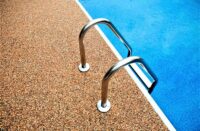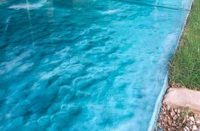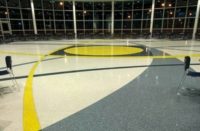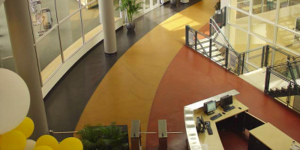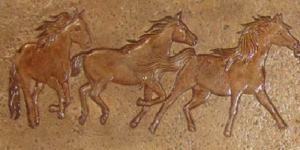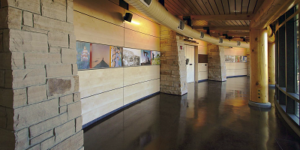The request from JMC: Museum Arts LLC to Sundek of Washington was an odd one. “Can you make floors that look like dirt?” JMC asked. Not dirty floors, mind you, dirt floors.
The company, headed up by Jonathan Martin, a man renowned for his imagination and attention to detail when it comes to building custom-themed environments, was searching for a subcontractor that could help his team bring his vision of The Museum of the Bible in downtown Washington, D.C., to fruition.
The technologically advanced museum lets visitors journey back to a time when Jesus of Nazareth walked the earth. A place where villages with stone walls, dirt floors, olive trees and oil lamps, along with a mural of the Sea of Galilee and the sounds of wood carts in the distance, combine for a memorable and unparalleled experience in an environment inspired by the events described in the Bible.
Sundek of Washington was up for the challenge. Over a few months’ time, it engaged in a series of meetings and site visits to grasp the concept of how a decorative concrete dirt floor could contribute to ensuring visitors an immersive, realistic experience.
Several Sundek products were considered, and samples made to try to capture the right color tones, shadowing and flow. After all, JMC wasn’t looking for a perfect decorative overlay for the floor but insisted on one that would be installed perfectly. Company officials finally decided on the Sundek SunStone system.
But it wasn’t that cut and dry. Before an approval could be decreed, a live sample had to be performed on a floor in the museum. Sundek of Washington’s Bob Miller and Guadalupe Velazquez assembled their team. The existing cast-in-place floor had a hard-troweled finish that had to be ground with 25-grit diamonds to achieve the profile needed for bonding.
Special equipment with pre-cyclone collectors were used to assure a dust-free operation. Mixing was done in a specially constructed chamber to minimize impact. The mix was carefully placed just thick enough to produce the wanted granular look. Once cured, the Sundek team returned and applied the topcoat stain and sealer— all under JMC’s watchful eye.
Three weeks went by as a host of benefactors scrutinized the work before Sundek was given the final blessing to do the installation with one steadfast caveat: there were to be no joints or bulk heads in the 5,100-square-foot overlay.
A team comprising 18 installation technicians and three mixing technicians worked on the project— including five of Sundek of Washington’s best hand trowel men led by Guadalupe who placed each hand-carried 5-gallon pail of mixed SunStone during a 10-hour period.
The sculpted earth floor was covered for weeks as the museum’s final props were placed and lights installed. Finally, the tools and materials were moved out and the earthen floor was revealed. And all agreed: it was good.
www.sundekofwashington.com
